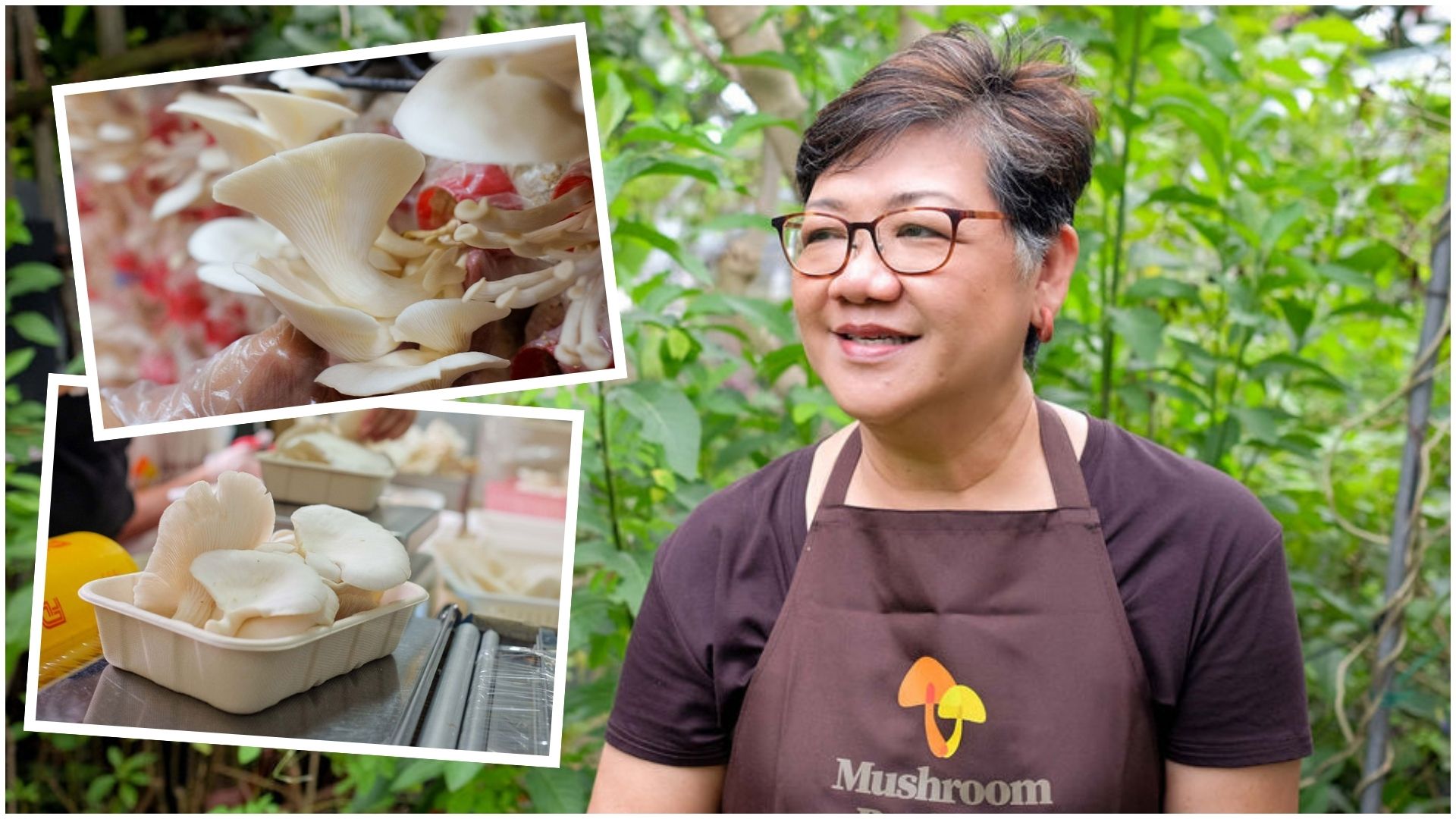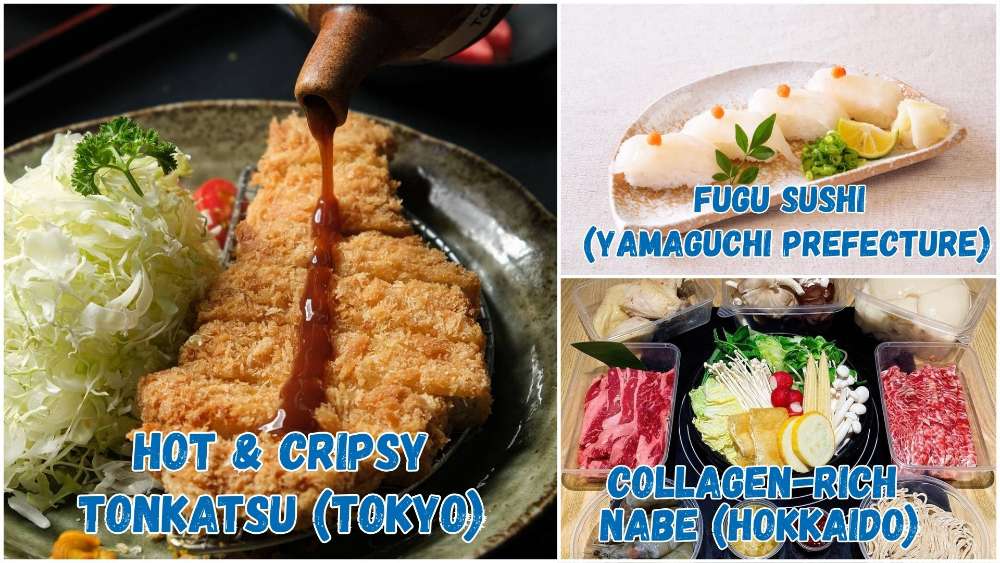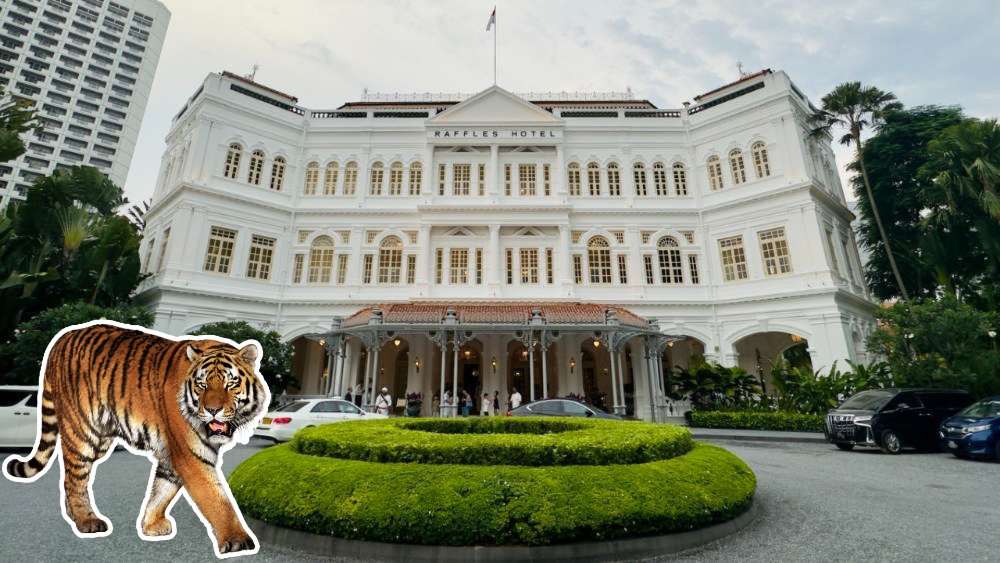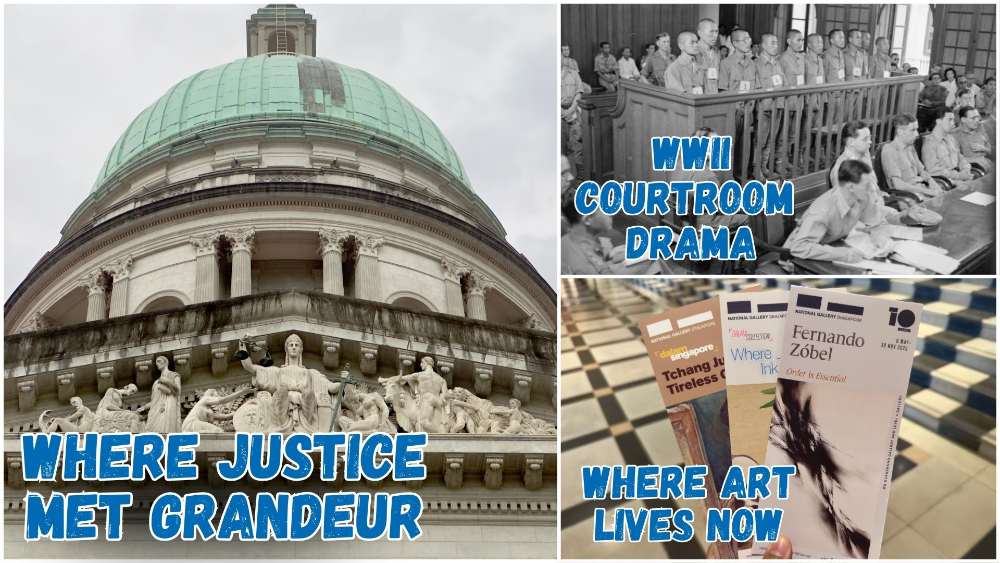Tiger On The Loose? It Happened At This National Monument
What is a National Monument? Who gazettes them? How many national monuments are there in Singapore? To date, the Preservation of Sites and Monuments, a division of National Heritage Board, has identified and gazetted 75 buildings, structures and sites of national significance as an integral part of Singapore’s built heritage.
And we're here to tell you all about them - one National Monument at a time!
You've probably passed by or stepped into more than a few of them without realising they were National Monuments: Al-Abrar Mosque, Asian Civilisations Museum, the Civilian War Memorial, Saint Andrew's Cathedral, the Esplanade Park Memorials, Fort Siloso on Sentosa - no need to plan an itinerary for friends visiting from overseas; just show them this article ✌️
In this edition, we highlight a luxury hotel that has seen its share of prominent personalities, including Sir Charles Spencer Chaplin (yes, Charlie Chaplin), pop icon Michael Jackson, and the Prince and Princess of Wales (William and his wife, Kate Middleton).
📍 Location
Raffles Hotel was the 20th building to be gazetted as a National Monument, and is located near other National Monuments such as CHIJMES (Former Convent of the Holy Infant Jesus Chapel and Caldwell House), Cathedral of the Good Shepherd and Civilian War Memorial. The MRT stations nearest to Raffles Hotel are City Hall and Esplanade.
📅 Significant dates
Dates built:
- 1830s: Raffles Hotel began as Beach House, a private residence built by Robert Scott
- 1 Dec 1887: Raffles Hotel was founded and commenced operations as a 10-room hotel
- 1899: The Main Building of Raffles Hotel was constructed on the site of the original Beach House
Milestones:
- 1890: A pair of two-storey wings containing 22 new suites was added to the original building
- 1894: The Palm Court Wing was built
- 1904: The Bras Basah Wing was added
- 1989-16 Sept 1991: The hotel underwent large-scale restoration
- Dec 2017-1 Aug 2019: A major renovation of the hotel was undertaken
Dates gazetted:
- 4 Mar 1987: Raffles Hotel was first gazetted as a National Monument
- 3 Jun 1995: Raffles Hotel was gazetted again as a National Monument, superseding the 1987 gazette boundary
📜 History
Raffles Hotel traces its roots to the 1830s, when Robert Scott built a private residence known as Beach House. In 1878, the property was leased by Charles Emmerson, who converted it into Emmerson’s Hotel. Following his sudden death in 1883, the establishment closed, only to reopen on 1 Jan 1884 as Hotel Des Indes under the ownership of W. F. Van Erp. It was later occupied by Raffles Boarding School until its lease expired in Sept 1887.
That same year, the Sarkies brothers – Martin, Tigran, Aviet and Arshak – rented the building from its then-owner, wealthy Arab merchant Syed Mohamed Alsagoff, and launched Raffles Hotel. Members of Singapore’s Armenian community, the brothers were closely connected with the Armenian Church, which served as their social and religious hub.
The Sarkies were already established hoteliers, owning the Strand Hotel in Yangon, Myanmar, as well as several properties in Penang, Malaysia, including the Eastern and Oriental Hotels (later merged into the Eastern & Oriental Hotel), the Oriental Tiffin & Billiard Rooms (later renamed the Sea View Hotel), and the Crag Hotel.
Their decision to invest in Raffles Hotel could not have been better timed. By the late 19th century, the rise of steamship travel and the opening of the Suez Canal in 1869 had made journeys to Asia quicker and more comfortable, ushering in an era when Europeans could, for the first time, visit the region for leisure.
When Tigran Sarkies took over management, he elevated the modest hostel into a grand hotel befitting its growing reputation. Between 1889 and 1890, new wings were added to either side of the building. Around 1890, the Billiard Room was constructed at the corner of Bras Basah and Beach Road for the amusement of guests, while the Palm Court Wing was completed around 1894.
The hotel’s fortunes, however, shifted after the death of Arshak Sarkies in 1931, when it was revealed that the brothers had amassed considerable debts. The Great Depression, which had contributed to their bankruptcy, also severely disrupted Singapore’s tourism and hospitality sectors, placing Raffles Hotel’s future in jeopardy.
However, following Arshak Sarkies’ demise in 1931, it was revealed that the Sarkies brothers had accumulated tremendous debts, threatening Raffles Hotel’s survival. The Great Depression, which had partly caused the Sarkies brothers’ bankruptcy, also greatly affected the tourism and hotel industries in Singapore.
A lifeline arrived two years later, on 28 Feb 1933, with the creation of Raffles Hotel Limited, a new company that took ownership of the building and its grounds, securing the survival of this historic landmark.
During the Japanese Occupation (1942–1945), the staff at Raffles concealed the hotel’s silverware, including its famed silver beef trolley, which was said to have been buried in the Palm Court. The Japanese renamed the property Syonan Ryokan (“Light of the South Hotel”) and reoriented the main entrance to face east so that it would greet the rising sun.
Following Japan’s surrender, M. S. Arathoon – who had been retained by the Japanese as assistant manager – reopened the hotel in Sept 1945. Many local staff had remained in service throughout the war, while others who had been displaced soon returned. The hidden silverware was recovered, and the hotel briefly served as a transit camp for prisoners of war awaiting repatriation.
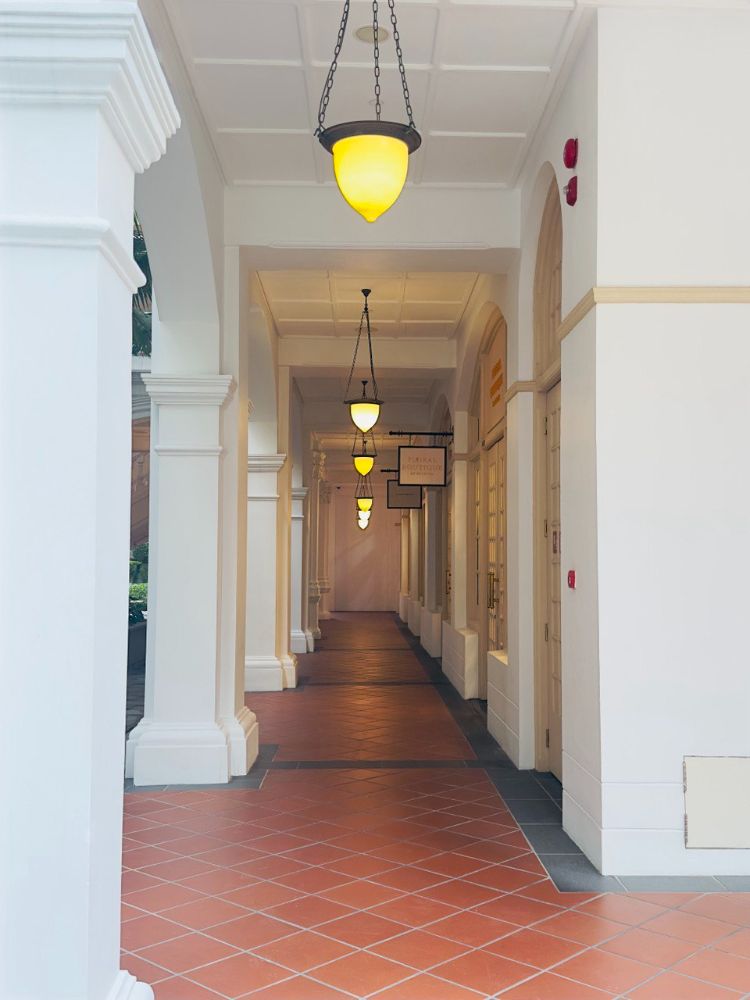
IMAGE: NG KAI
Raffles Hotel was first gazetted as a National Monument in 1987. Two years later, it closed for an extensive restoration project that lasted until 16 Sept 1991. Guided by original architectural plans and historic photographs, the restoration aimed to recapture the hotel’s 1915 appearance. This included replacing the 1920s ballroom with a replica of the original cast-iron portico (a covered, roofed walkway), repairing intricate plasterwork, and reinstating the sweeping timber staircase.
The works also introduced a new block housing an in-house museum, a shopping arcade, and the Jubilee Hall theatre, a faithful reproduction of a 19th-century playhouse. In 1995, Raffles Hotel was gazetted once more as a National Monument, this time with an updated boundary that superseded the 1987 designation.
Over the years, the hotel underwent a series of renovation, repair and expansion. The restored Raffles Hotel, which now houses more than 100 suites, is also known for the Singapore Sling, the famous cocktail created by Ngiam Tong Boon, a barman at the hotel.
📐 Design and architecture
Completed in 1899, the three-storey Main Building superseded the Beach House. Designed by Regent A. J. Bidwell of the renowned firm Swan & Maclaren, it was ahead of its time, boasting one of Singapore’s earliest fully electrified systems: electric lighting, ceiling fans and call bells powered by the hotel’s own generators. Raffles Hotel was, in fact, the first hotel in the region to have electric lights.
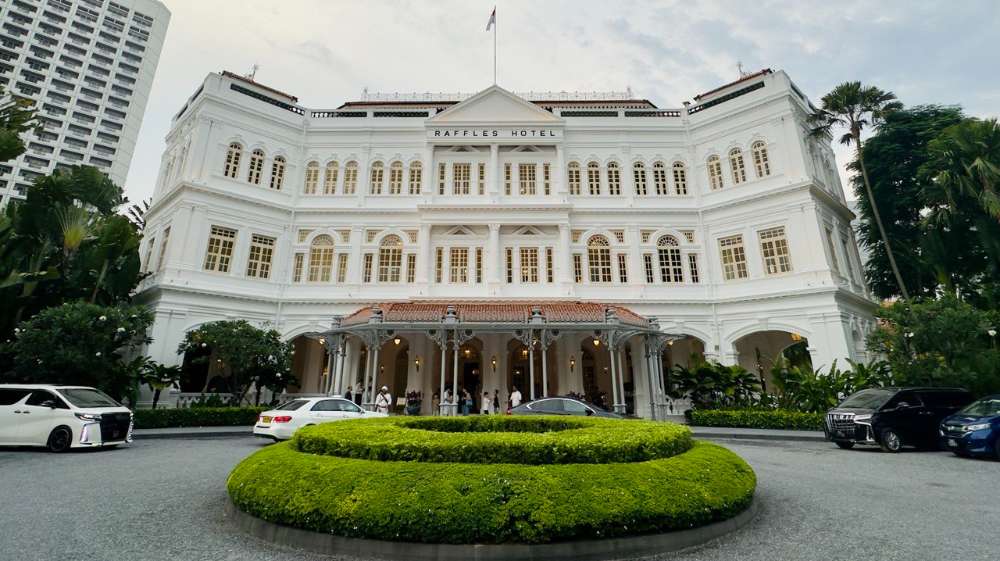 IMAGE: NG KAI
IMAGE: NG KAI
The Main Building is Neo-Renaissance in style, defined by a symmetrical plan and the use of Classical orders, including Corinthian and Doric columns, along with generous round arches.
Encircling the structure are wide verandahs and rows of Palladian windows (central windows with an arched head that have a usually narrower window with a square head on each side). These elements kept interiors cool and well-ventilated in Singapore’s tropical climate before air-conditioning, while the angled wings on either side were arranged to admit daylight throughout the day.
At the main entrance stands an elegant cast-iron portico with intricate tracery. The original, designed by Walter MacFarlane & Company of Glasgow, was erected in 1913 and dismantled in 1920 to make way for a new ballroom. The present portico, installed during the 1989 to 1991 restoration, is a faithful reproduction of the earlier design.
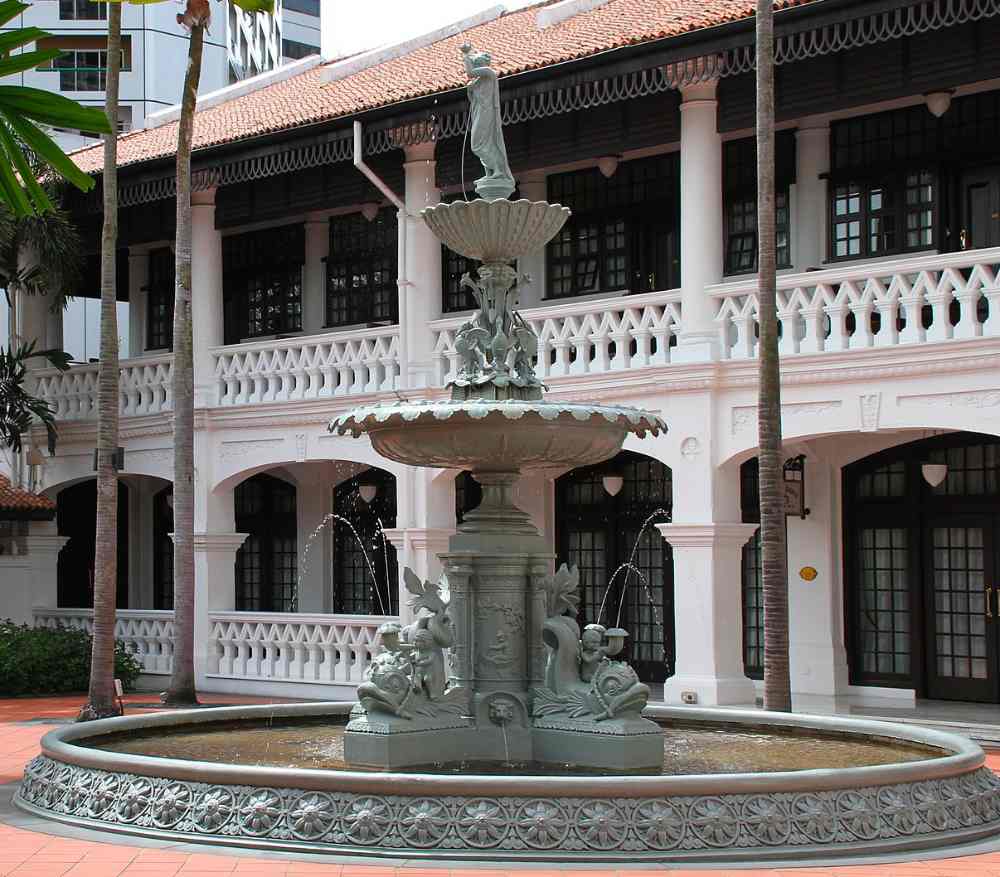 IMAGE: WIKIMEDIA COMMONS/@TONY HISGETT
IMAGE: WIKIMEDIA COMMONS/@TONY HISGETT
Raffles Hotel also boasts several handsome courtyards, including the aptly named Palm Garden. Beneath the tall palms stands an ornate cast-iron fountain, manufactured by Walter MacFarlane & Company at the turn of the twentieth century.
The fountain was first installed at the centre of the Former Telok Ayer Market (today’s Lau Pa Sat). In 1902, it was moved to a plaza outside Orchard Road Market. Later dismantled and forgotten, it was only rediscovered in 1989. After being verified as authentic, the Victorian fountain was reassembled, restored, and installed in the Palm Garden.
💬 Guests and visitors
Raffles Hotel has long welcomed a roll-call of distinguished guests, from royalty and statesmen to cultural icons, among them King Faisal of Saudi Arabia, Indonesia’s President Suharto, and the “King of Pop”, Michael Jackson.
The Writer’s Bar honours the many literary figures who visited, including Joseph Conrad, Rudyard Kipling and Noël Coward. Suites are named after early guests such as Charlie Chaplin and Somerset Maugham, the latter said to have spent long hours writing in the Palm Court.
The hotel has also entertained some unexpected visitors, including a python and a wild boar. Most famously, in the early hours of 1902, an escaped circus tiger slipped beneath the hotel’s Billiard Room, which then stood on stilts. Charles McGowan Phillips, then-principal of Raffles Institution and a member of Singapore’s rifle team, was summoned and, still in his pyjamas, shot and killed the animal.
For the latest updates on Wonderwall.sg, be sure to follow us on TikTok, Telegram, Instagram, and Facebook. If you have a story idea for us, email us at [email protected].





